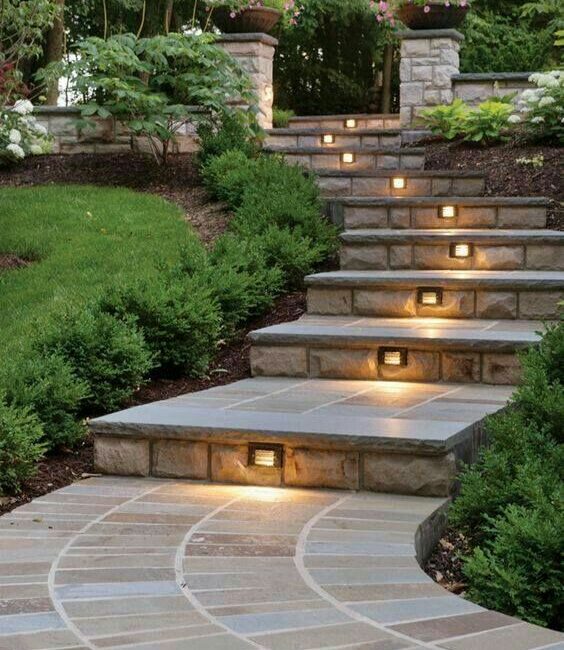Address
126 Maple Ave, Wallington, NJ 07057, USA
Work Hour
Open 24h






Masonry steps are durable and aesthetically pleasing structures commonly used in both residential and commercial properties to provide access to different levels. Constructed from materials such as bricks, concrete blocks, or natural stone, these steps are known for their strength and longevity. Masonry steps can be designed to match or complement the architectural style of the surrounding environment, offering a wide range of customization options in terms of shape, color, and texture. They are also valued for their resistance to weathering, making them a practical choice for outdoor installations. Proper design and construction are essential to ensure safety and durability, with considerations like tread depth and riser height being key factors in the building process.
Masonry steps are a popular architectural feature for both residential and commercial settings, offering a durable and visually appealing solution to navigate changes in elevation. Constructed from robust materials such as bricks, concrete blocks, or natural stone, masonry steps are designed to withstand the rigors of weather and heavy foot traffic, making them an excellent choice for outdoor environments.
Durability: One of the most significant advantages of masonry steps is their ability to endure harsh weather conditions including rain, snow, and extreme temperatures. The materials used, such as granite or limestone, are naturally resistant to decay and wear.
Aesthetic Versatility: Masonry steps can be customized to suit a wide range of architectural styles. Whether you are looking for a rustic look with irregular stone or a more formal appearance using cut stone or precisely shaped bricks, masonry steps can be tailored to meet specific design needs.
Safety Features: Safety is a critical consideration in step construction. Masonry steps are generally constructed with textured surfaces to reduce the risk of slipping. Additionally, the design can include features such as wider treads and appropriate riser heights to accommodate comfortable and safe foot traffic.
Low Maintenance: Once installed, masonry steps require minimal maintenance. Periodic cleaning and checking for any mortar erosion will generally suffice to keep them in good condition.
The construction of masonry steps involves several detailed steps to ensure structural integrity and aesthetic quality:
Design and Planning: The first step is to design the staircase, considering the total height to be climbed, the space available, and the desired width of the steps. This planning stage determines the number of steps needed and the dimensions of each tread and riser.
Foundation Preparation: A solid foundation is crucial for the stability of masonry steps. This often involves excavating the area and laying a base of crushed stone or concrete to provide a stable and level platform.
Laying the Steps: Starting from the bottom, masons build each step using the chosen material. For stone steps, large slabs may be used for treads, with smaller pieces or different materials used for risers and sidewalls.
Finishing Touches: The steps are finished with pointing, where the joints between the stones or bricks are filled with mortar to secure the structure and enhance appearance. Surface treatments may also be applied to improve durability and slip resistance.
Sealing and Waterproofing: Finally, the steps may be sealed to protect against moisture and weathering, extending the life of the materials and maintaining their appearance.
Masonry steps are versatile and can be used in various applications, including:
In summary, masonry steps combine functionality with aesthetic appeal, providing a sturdy, safe, and attractive solution for stepping through different levels in both public and private environments. Their design flexibility and durability make them a preferred choice for many construction projects.
Constructing masonry steps is a methodical process that requires precision and careful planning to ensure the steps are safe, durable, and visually appealing. The process can vary depending on the materials used, such as bricks, stone, or concrete blocks, but the general steps are similar. Here’s a detailed description of the process along with a concise list of the main steps involved:
Design and Planning: The first step involves designing the staircase. This includes calculating the total rise (the height from the lower level to the upper level) and the total run (the horizontal distance between the bottom and the top of the stairs). These measurements are used to determine the number of steps needed and the dimensions of each step.
Site Preparation: The area where the steps will be constructed is cleared and leveled. Any grass, debris, or existing structures are removed to prepare for the foundation.
Building the Foundation: A strong foundation is critical for the stability of the steps. A concrete foundation is typically poured to provide a solid base that can support the weight of the masonry.
Laying the First Course: The construction of the steps begins with the first course of material. This might involve laying bricks, stone, or blocks in a staggered pattern to ensure strength and stability.
Building Risers and Treads: Each step consists of a riser (the vertical part) and a tread (the horizontal part). These are carefully constructed to meet the planned dimensions and ensure a uniform appearance.
Finishing Details: After the basic structure of the steps is complete, finishing touches are applied. This includes pointing, where the joints between the masonry units are filled with mortar to secure the pieces and enhance the appearance.
Sealing and Waterproofing: To protect the masonry from weather elements and extend the lifespan of the steps, sealing and waterproofing treatments may be applied.
Clean-up and Inspection: The final step involves cleaning up the construction area and inspecting the newly built steps to ensure they meet safety standards and the desired quality.
This step-by-step approach helps create masonry steps that are not only structurally sound and functional but also enhance the aesthetic appeal of the surrounding environment. Proper execution of each stage is crucial for achieving the best results.
